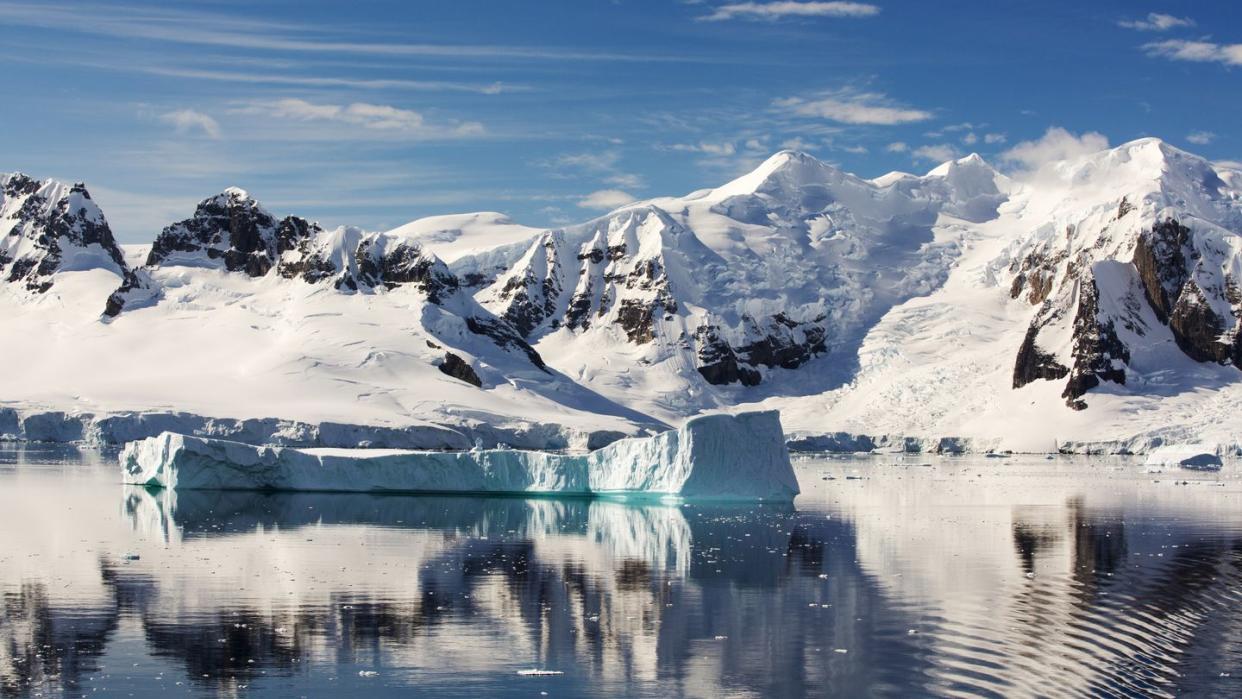Antarctica’s Skies Hold a Mysterious Chill. A Puff of Vapor Might Be to Blame.

Research over nearly a decade has tracked an unusual case of methane and carbon dioxide levels that seems to be actually cooling portions of Antarctica.
Dubbed a negative greenhouse effect, this unique occurrence only happens in extremely dry circumstances.
Studies measuring how the negative greenhouse effect works point directly to a lack of water vapor.
Leave it to Antarctica to flip the script on understanding the impact that the ever-rising rising levels of carbon dioxide and methane have on our planet. A team of researchers has now announced both the presence of a negative greenhouse effect and its primary cause after tracking the phenomenon for roughly a decade. A negative greenhouse effect is when an increase in CO2 concentration actually cools the Earth-atmosphere system in a specific location, instead of producing the general warming effect seen everywhere else.
The peculiarity of the event has the team coming back for more.
Following up on a 2015 study, originally published in Geophysical Research Letters, the team from the University of Bremen in Germany has returned in 2024 with a study (in the same journal) showing that “the amount of water is the main driver” of this unique negative greenhouse effect.
Greenhouse gases, such as carbon dioxide and methane, help trap the Sun’s heat in our atmosphere. This is a natural occurrence that is good at natural levels, as it works to keep Earth’s temperature at an inhabitable level. However, growing levels of these greenhouse gases introduced by human industrialization have vastly increased the amount of radiation trapped in the atmosphere, increasing Earth’s temperatures worldwide and causing the current climate crisis.
But something strange is happening in a portion of the Antarctic Plateau—these rising levels of greenhouse gasses are cooling the atmosphere, as more heat radiates away from Earth than is trapped. This negative greenhouse effect doesn’t mean surface temperatures aren’t still rising, but they aren’t warming at the rate a traditional greenhouse effect would cause. This negative greenhouse effect, though, has only been found in this one Antarctic area known for extremely dry air.
The 2024 study ran simulations for both Antarctica and the Arctic, showing that increases in carbon dioxide and methane resulted in differing outcomes in each location. “The different amount of water vapor shows to be responsible for the differences in warming/cooling in both polar regions,” the authors wrote. “In Antarctica, doubling [methane] leads to a cooling of almost the whole troposphere.” The team noted that an increase in water vapor in the area could invert this result.
A separate study—published in American Geophysical Union in 2017—used 14 years of NASA satellite observations to verify the existence of the negative greenhouse effect, and found that it varies seasonally and spectrally. This study also tied the effect’s presence to water.
“Our findings indicate that the strong surface-based temperature inversion and scarcity of free tropospheric water vapor over the Antarctic Plateau cause the negative greenhouse effect,” the authors wrote. “These are climatological features uniquely found in the Antarctic Plateau region, explaining why the greenhouse effect is positive everywhere else.”
The 2024 study found that the amount of water vapor available plays a key role in a negative greenhouse effect scenario, and the authors believe that a lack of warming in Antarctica throughout the past decade could tie directly to dry conditions—especially considering that simulations of the Arctic climate didn’t reveal the same results, thanks to the presence of water vapor.
Simulations introduced additional water vapor into the Antarctic equation, showing that Antarctic warming would better match Arctic levels if additional water vapor appeared. If it keeps things cooler for a little while, we’ll take what we can get until more water vapor turns up.
You Might Also Like

